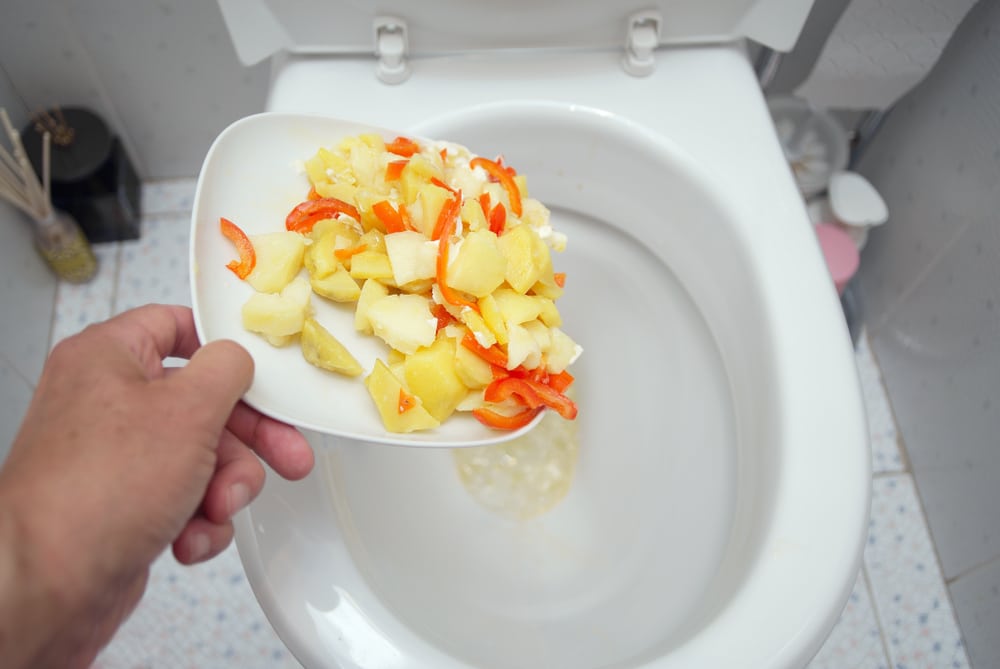Any individual has their own idea about Is it safe to flush food (especially rice) down the toilet?.

Intro
Many people are typically confronted with the issue of what to do with food waste, especially when it concerns leftovers or scraps. One common concern that occurs is whether it's all right to purge food down the toilet. In this write-up, we'll delve into the reasons that individuals might take into consideration flushing food, the consequences of doing so, and alternate approaches for appropriate disposal.
Reasons individuals could consider purging food
Absence of awareness
Some individuals might not recognize the possible injury brought on by purging food down the commode. They might wrongly believe that it's a harmless technique.
Convenience
Flushing food down the toilet might seem like a quick and very easy option to throwing away undesirable scraps, specifically when there's no neighboring trash can offered.
Laziness
In some cases, individuals may simply choose to flush food out of large laziness, without thinking about the effects of their activities.
Consequences of flushing food down the commode
Environmental influence
Food waste that ends up in waterways can add to pollution and harm water environments. Furthermore, the water made use of to flush food can stress water sources.
Plumbing concerns
Flushing food can bring about clogged up pipelines and drains pipes, creating pricey plumbing repairs and troubles.
Kinds of food that need to not be flushed
Fibrous foods
Foods with coarse textures such as celery or corn husks can get entangled in pipelines and trigger clogs.
Starchy foods
Starchy foods like pasta and rice can soak up water and swell, bring about clogs in pipes.
Oils and fats
Greasy foods like bacon or food preparation oils ought to never ever be purged down the toilet as they can strengthen and create clogs.
Appropriate disposal methods for food waste
Using a garbage disposal
For homes furnished with waste disposal unit, food scraps can be ground up and flushed through the pipes system. Nonetheless, not all foods appropriate for disposal in this fashion.
Recycling
Particular food product packaging products can be reused, decreasing waste and decreasing environmental impact.
Composting
Composting is an environment-friendly way to get rid of food waste. Organic products can be composted and made use of to improve dirt for horticulture.
The relevance of correct waste management
Lowering environmental injury
Appropriate waste monitoring practices, such as composting and recycling, aid decrease pollution and protect natural deposits for future generations.
Securing plumbing systems
By preventing the practice of flushing food down the toilet, homeowners can prevent costly pipes repair work and maintain the honesty of their plumbing systems.
Verdict
In conclusion, while it might be alluring to purge food down the toilet for convenience, it is essential to comprehend the possible repercussions of this activity. By taking on appropriate waste administration practices and dealing with food waste properly, individuals can contribute to much healthier plumbing systems and a cleaner atmosphere for all.
FLUSH FOOD DOWN THE TOILET?
FLUSHING FOOD CAN CAUSE BLOCKED DRAINS IN YOUR HOME
All of the plumbing fixtures in your home are connected to the same sewer pipe outside of your home. This outdoor sewer pipe is responsible for transporting all the wastewater from your home to the Council sewer mains. Even small pieces of food that go down the kitchen sink can cause problems for your sewer. It should therefore be obvious that flushing larger bits of food, such as meat, risks a clog in either the toilet itself or the sewer pipes. Flushing greasy food is even more problematic because oil coagulates when it cools, coating the interior lining of your pipes.
THE TOILET IS NOT A BIN
Food isn’t the only thing that people shouldn’t be flushing down the toilet. People use the toilet to dispose of all kinds of things such as tampons, makeup wipes, dental floss, kitty litter and even underwear. Water goes to great lengths to educate residents about the high costs and stress placed on wastewater treatment systems simply from people flushing the wrong stuff down the toilet. It costs taxpayers millions of dollars each year, and homeowners thousands in blocked drain repairs.
FLUSHING FOOD IS A WASTE OF WATER
Flushing food is a waste of our most precious resource - water. In June this year Level 1 water restrictions were introduced to protect water supply from drought conditions. Much of New South Wales continues to be affected by prolonged drought with recent figures revealing up to 97 per cent of the state remains in drought. Depending on whether you have a single or dual flush toilet, every single flush uses between five and 11 litres of water. In the current climate this is a huge amount of water to be wasting on flushing food that should be placed in the bin (or better yet, the compost).
https://www.jabplumbingsolutions.com.au/blog/can-you-flush-food-down-the-toilet

We hope you liked our post about What Can Happen If You Flush Food Down the Toilet?. Thank you so much for taking the time to read through our post. Liked our review? Please quickly share it. Help other people discover it. Thank you so much for taking the time to read it.
Get Estimate
Comments on “Is it Recommended to Dispose of Food Down the Toilet?”